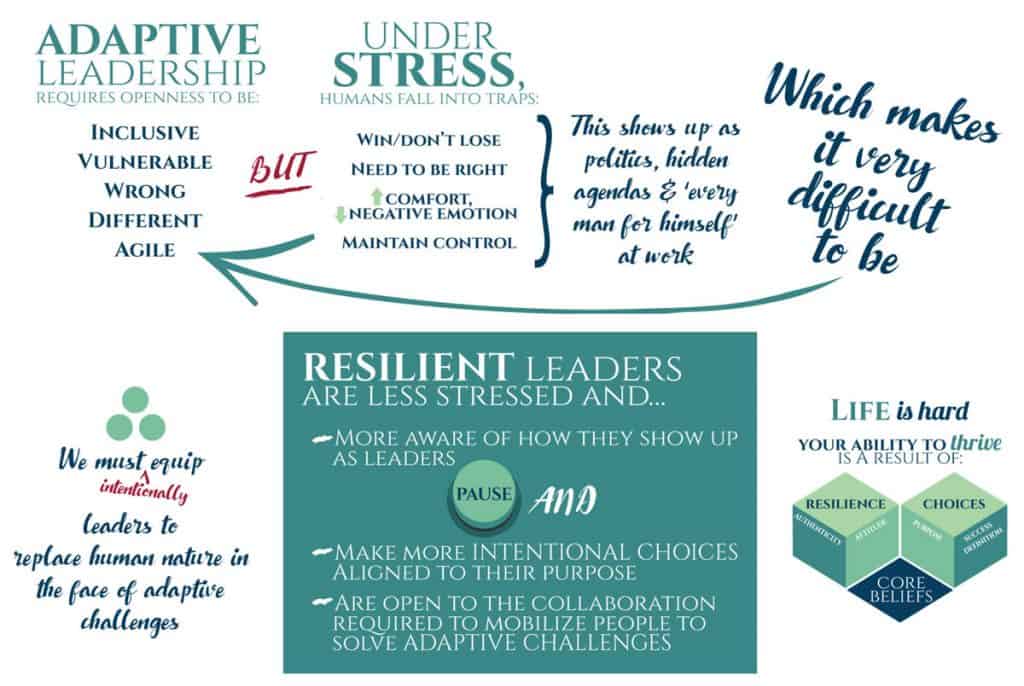Adaptive Leadership That Doesn’t Adapt
The Case for Resilience in Organizations

There is a lot of talk about building adaptive leadership to thrive in the face of rapid disruptive change. Sometimes this has to do with merely adapting to a lot of change and sometimes it is a full blown effort to find ways of thriving while facing down the kinds of challenges that require leaders to think differently and react on the fly to a volatile (V), uncertain (U), complex (C), and often ambiguous (A) environment (VUCA). In many cases, traditional leadership development misses the mark on equipping leaders to mobilize people in the kinds of situations that demand different thinking.
How effectively are your leaders addressing adaptive challenges, making the right decisions, and implementing solutions in your VUCA environment?
Want to talk about that? Call us, it’s what we do.
Traits of an Adaptive Leader
Adaptive Leadership (Heifetz, The Practice of Adaptive Leadership), requires a level of openness to collaboration, the likes of which challenges even the best leaders. Adaptive Leadership requires a willingness to be vulnerable, inclusive and enthusiastic about taking input from others while creating conversations that drive learning for both parties up, down, sideways and outside of organizations. It demands a focus on the answer, rather than who came up with it.
Avoiding the Fight / Flight / Freeze Phenomenon
What we know about VUCA, is that it is stressful. In constantly changing and uncertain environments, our clients complain of ‘change fatigue’, burn out, and all manner of symptoms of stress, both physical and relational. These are tough places to work in and the reality is that highly stressed people simply do not collaborate well…which is the very opposite of what is required for Adaptive Leadership.
Research tells us that under stress, humans fall into traps largely caused by the fight/flight/freeze phenomenon. Under stress people tend to try to maintain control and appear rational. They tend to view things from more of a win/lose filter than that of collaboration. Some go ‘into themselves’ and most people have at least a few coping mechanisms to protect themselves. During times of intense change, this often shows up as symptoms like ‘every man for himself’, increased competition, absenteeism, decreased engagement, increased office politics and other less than ideal human relations/interactions.
Building Adaptive Leadership from Within
Over the past 10 years of equipping leaders with Adaptive Leadership skills, we have come to the conclusion that those skills are extremely difficult to implement when leaders are distracted by the stress, rather than intention about how to handle it. We have discovered that in order to build Adaptive Leadership, we must first build the resilience required to enable leaders to intentionally resist human nature and replace it with a more productive response.
Resilient people are better equipped to consciously choose responses that are adaptive, find meaning in situations and make leadership decisions that drive an organization’s ability to get real issues on the table, align, and thrive in the face of change. In short, they are better equipped to ‘push pause’ and make decisions that are more about the whole and less about feeling threatened.
Are you confident your leaders are equipped to ‘push pause’, think through the implications, and make the right decision for all stakeholders?
